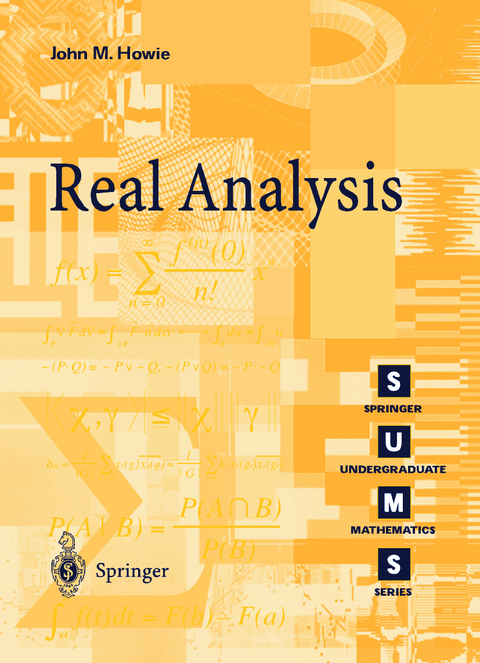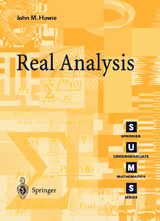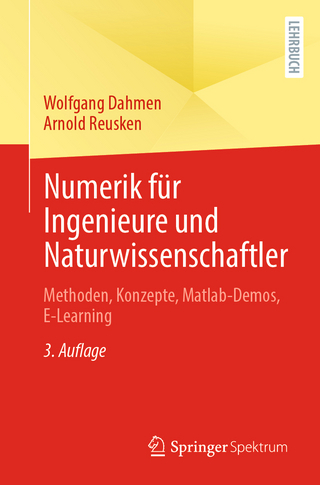Real Analysis
Springer London Ltd (Verlag)
978-1-85233-314-0 (ISBN)
1. Introductory Ideas.- 1.1 Foreword for the Student: Is Analysis Necessary?.- 1.2 The Concept of Number.- 1.3 The Language of Set Theory.- 1.4 Real Numbers.- 1.5 Induction.- 1.6 Inequalities.- 2. Sequences and Series.- 2.1 Sequences.- 2.2 Sums, Products and Quotients.- 2.3 Monotonie Sequences.- 2.4 Cauchy Sequences.- 2.5 Series.- 2.6 The Comparison Test.- 2.7 Series of Positive and Negative Terms.- 3. Functions and Continuity.- 3.1 Functions, Graphs.- 3.2 Sums, Products, Compositions; Polynomial and Rational Functions.- 3.3 Circular Functions.- 3.4 Limits.- 3.5 Continuity.- 3.6 Uniform Continuity.- 3.7 Inverse Functions.- 4. Differentiation.- 4.1 The Derivative.- 4.2 The Mean Value Theorems.- 4.3 Inverse Functions.- 4.4 Higher Derivatives.- 4.5 Taylor’s Theorem.- 5. Integration.- 5.1 The Riemann Integral.- 5.2 Classes of Integrable Functions.- 5.3 Properties of Integrals.- 5.4 The Fundamental Theorem.- 5.5 Techniques of Integration.- 5.6 Improper Integrals of the First Kind.- 5.7 Improper Integrals of the Second Kind.- 6. The Logarithmic and Exponential Functions.- 6.1 A Function Defined by an Integral.- 6.2 The Inverse Function.- 6.3 Further Properties of the Exponential and Logarithmic Functions.- Sequences and Series of Functions.- 7.1 Uniform Convergence.- 7.2 Uniform Convergence of Series.- 7.3 Power Series.- 8. The Circular Functions.- 8.1 Definitions and Elementary Properties.- 8.2 Length.- 9. Miscellaneous Examples.- 9.1 Wallis’s Formula.- 9.2 Stirling’s Formula.- 9.3 A Continuous, Nowhere Differentiable Function.- Solutions to Exercises.- The Greek Alphabet.
| Erscheint lt. Verlag | 27.9.2006 |
|---|---|
| Reihe/Serie | Springer Undergraduate Mathematics Series |
| Zusatzinfo | 13 Illustrations, black and white; X, 276 p. 13 illus. |
| Verlagsort | England |
| Sprache | englisch |
| Maße | 170 x 244 mm |
| Themenwelt | Mathematik / Informatik ► Mathematik ► Analysis |
| ISBN-10 | 1-85233-314-6 / 1852333146 |
| ISBN-13 | 978-1-85233-314-0 / 9781852333140 |
| Zustand | Neuware |
| Haben Sie eine Frage zum Produkt? |
aus dem Bereich




